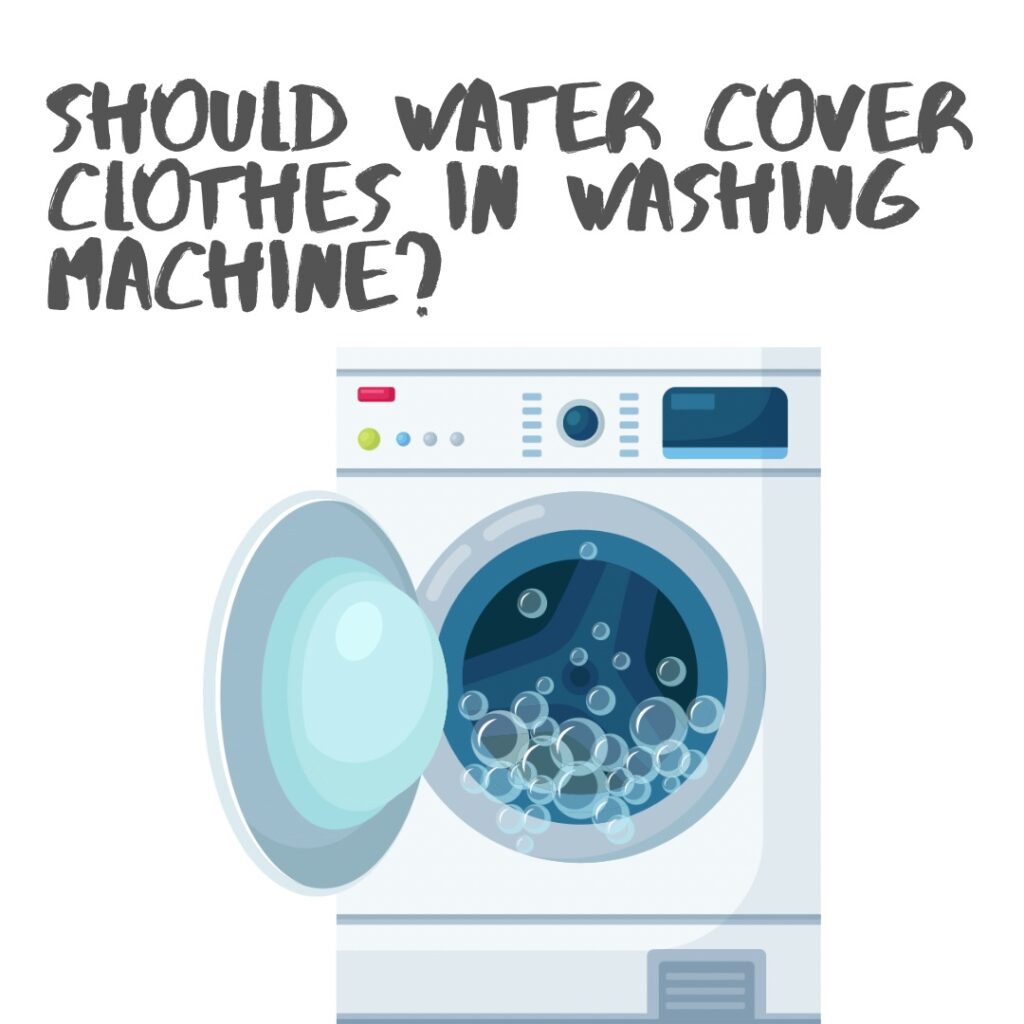Have you ever pondered if your clothes should be completely covered by water in the washing machine for them to be effectively cleaned?
In this piece, we’ll dive into the advantages and disadvantages of completely submerging your laundry in water during the washing process.
Additionally, we’ll present some handy tips for achieving spotless clothes, whether they’re fully submerged or not.

Is Water Supposed to Cover Clothes in a Washing Machine?
When it comes to washing machines, many people wonder whether clothes should be fully submerged in water during the cleaning process.
The answer?
It depends on the type of washing machine you’re using!
Top-loading machines typically do cover clothes with water, but only to a bare minimum level.
They don’t use an excessive amount of water because the primary mode of cleaning is through friction between clothes, agitation from the agitator, and contact with the tub’s body.
In this case, water serves as an essential part of the equation, but too much can disrupt the effective cleaning process.
In front-loaders and high-efficiency washing machines, the water level is even lower.
These machines are designed to be more effective at washing clothes with less water due to their unique ability to extract dirt and stains through mechanical action and optimized detergent usage.
Lower water levels also contribute to reduced energy consumption – another advantage of these types of washers.
What Happens When You Use Too Much Or Too Little Water in Your Washer?
Finding the right balance of water usage in your washing machine is crucial to achieving clean, fresh and well-maintained clothing.
Using too much or too little water can lead to various problems that impede optimal performance.
Let’s delve deeper into the disadvantages of improper water usage in your washer.
Dilution of Detergent
Using too much water can dilute the detergent you’ve added to your wash cycle, resulting in poor cleaning performance. It’s important to strike the right balance between water and detergent so that your clothes are effectively cleaned without suffering from excess wear and tear.
Hindered Agitation and Contact
When there’s not enough water in the washer, it can prevent proper agitation and contact between clothes as well as between clothes and the agitator or tub. This lack of movement prevents fabrics from being thoroughly cleaned and can leave behind dirt, stains or even detergent residue.
Wrinkling
Using too little water in your washing machine can cause clothing to become more prone to wrinkling during the wash cycle due to insufficient moisture and fabric movement. Proper agitation and saturation help remove wrinkles before they have a chance to set into your garments.
Poor Rinsing
A washer with an inadequate amount of water won’t rinse clothes effectively, leaving behind soap residue that can irritate skin or cause fabrics to feel stiff or uncomfortable to wear.
Linting Problems
Without enough water for adequate rinsing and agitation, lint may accumulate on clothes during a wash cycle. This buildup can make it difficult for fabrics to rinse clean, leading them to wear unevenly over time.
Excessive Wear on Fabrics
Lastly, using too little water puts extra stress on clothing as friction increases within the washer drum. Over time, this excessive wear can cause fabrics to break down faster than they should, shortening their lifespan.
Understanding these disadvantages highlights the importance of using the right amount of water in your washing machine.
Always ensure you follow the manufacturer’s recommendations for load size and water levels to keep your clothes looking and feeling their best.
How Much Water Should You Add to a Washing Machine?
In today’s world of smart and high-efficiency washing machines, it’s rare that you’ll need to manually add water to your washer as they have sensor that can correctly determine the quantity of water that your specific load needs base on the weight: lighter items like linens, undergarments and delicate fabrics usually require less water than heavier textiles such as towels or jeans.
However, if you ever find yourself in a situation where you must do so, it’s essential not to overdo it.
The key is to add just enough water to cover the clothes or make them wet. This will ensure that your garments are properly cleaned without wasting water or causing damage to your washing machine and clothes.
Also, keep in mind that using the right amount of detergent is crucial for achieving pristine results.
Too little detergent may not effectively remove dirt and stains, while too much could create excessive suds and residue on your clothes.
Make sure to consult your washing machine’s user manual for the specific instructions on the optimal water level and detergent quantities for each load size or type.


